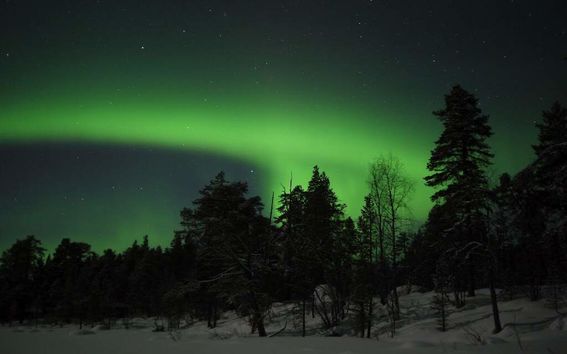The aurora borealis can be heard even when they can’t be seen

Professor Emeritus Unto K. Laine of Aalto University has made recordings of auroral sounds which show that the phenomenon is much more common than has been believed and occurs even in the absence of visible northern lights. ‘This cancels the argument that auroral sounds are extremely rare and that the aurora borealis should be exceptionally bright and lively,’ Laine says.
Laine has been studying sounds associated with the northern lights for many years. In 2016, he published a paper linking recordings of crackling and popping sounds during an auroral event with temperature profiles measured by the Finnish Meteorological Institute (FMI). These data not only demonstrated that aurora are sometimes associated with sounds but also supported Laine’s theory that the sounds result from electrical discharges across a temperature inversion layer about 70 meters above the ground.
The new recordings were made at night near the village of Fiskars. Even though no northern lights were visible, Laine’s recording captured hundreds of candidate ‘auroral sounds’. When the recordings were compared with measurements of geomagnetic activity by FMI, a strong correlation was evident. The 60 best candidate sounds were all linked with changes in the geomagnetic field.
‘Using the geomagnetic data, which was measured independently, it’s possible to predict when auroral sounds will happen in my recordings with 90% accuracy,’ says Laine. His statistical analysis suggests a causal link between geomagnetic fluctuations and auroral sounds.
For Laine, the most striking finding is the fact that auroral sounds occurred even in the absence of visible northern lights. ‘That was the largest surprise! The sounds are much more common than anyone thought, but when people hear them without visible aurora, they think it’s just ice cracking or maybe a dog or some other animal,’ he says.
Laine’s findings were presented on May 11 at the EUROREGIO/BNAM2022 Joint Acoustics Conference in Aalborg, Denmark, and the paper is available via ResearchGate.
Read more news

Unite! Seed Fund 2026: Call opens on 20 January 2026
Gain an early overview of the Unite! Seed Fund Call of Spring 2026. The call includes three funding lines: Student Activities, Teaching and Learning, and Research and PhD.
Deepika Yadav leverages technology to improve women's health
Deepika Yadav recently began as an assistant professor at the Department of Computer Science in the field of human-computer interaction (HCI) and interaction design for health and wellbeing.
Study: Internal combustion engine can achieve zero-emission combustion and double efficiency
A new combustion concept that utilizes argon could completely eliminate nitrogen oxide emissions from internal combustion engines and double their efficiency compared to diesel engines.






